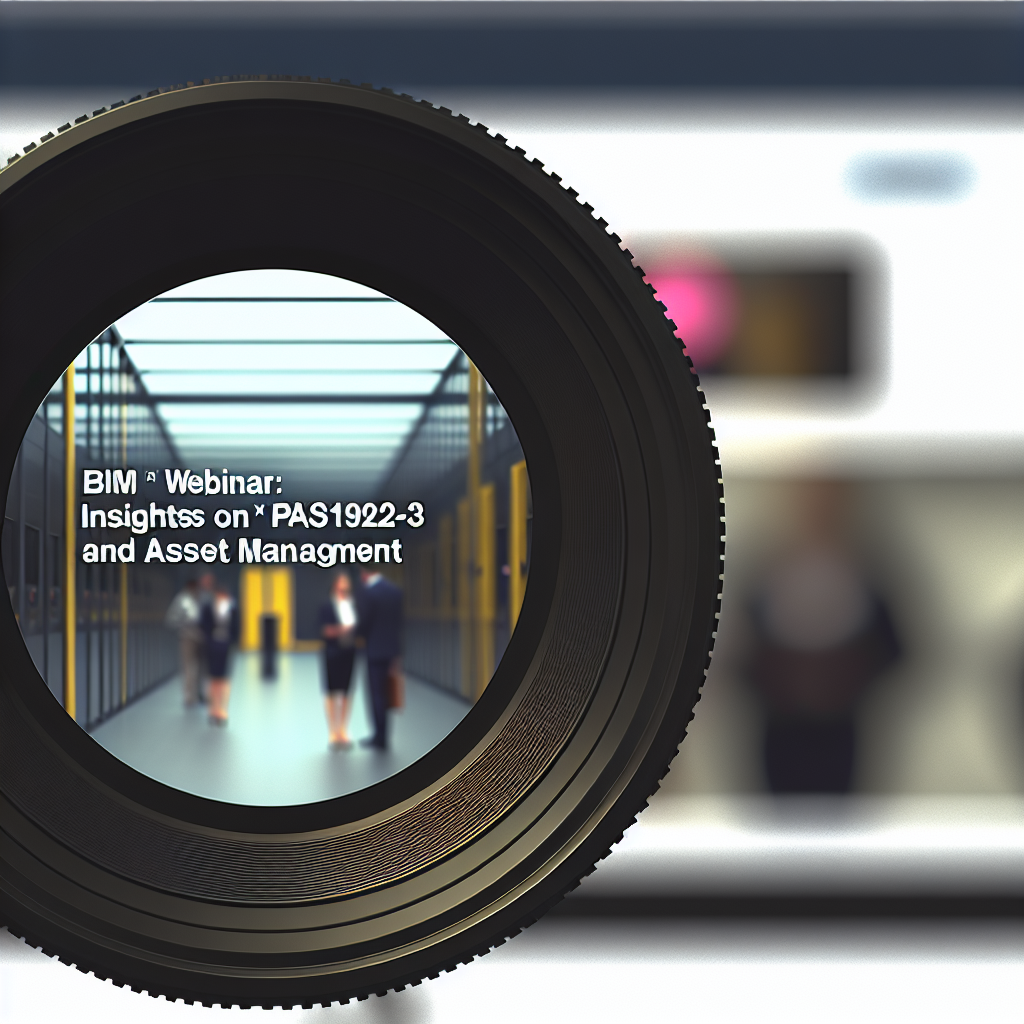Join us as we delve into the innovative world of Building Information Modeling (BIM) with the upcoming BIM REC Webinar featuring David Churcher, the lead author of PAS1192 3. This webinar will explore effective strategies for managing asset information using BIM Level 2, a critical component for modern infrastructure and construction projects. Gain insights into best practices and standards that drive digital asset management forward.
Understanding PAS1192 3 and BIM Level 2 for Asset Management
The PAS1192 3 standard, part of the UK’s suite of BIM protocols, provides a comprehensive framework for managing asset information throughout its lifecycle. This standard emphasizes the importance of accurate data collection, structured information transfer, and collaborative working practices. BIM Level 2, as outlined in PAS1192 3, promotes a digital approach that integrates all project data into a shared information environment, enhancing asset management’s efficiency and reliability.
Effective management of asset information using BIM Level 2 reduces risks associated with data loss, inconsistencies, and miscommunication. It ensures that stakeholders—from designers and contractors to facility operators—have access to up-to-date, accurate data, fostering better decision-making, lifecycle planning, and maintenance strategies. The webinar will detail practical processes and technological tools that enable organizations to embed these standards into their workflows.
Implementing Best Practices in Asset Information Management
Successful asset information management under BIM Level 2 requires a systematic approach that includes:
- Data Structuring: Organize asset information using standardized data templates and classifications to facilitate interoperability and clarity.
- Collaborative Data Sharing: Utilize Common Data Environments (CDEs) to ensure all project stakeholders access consistent and authoritative data sources.
- Lifecycle Data Integration: Capture asset data from design through construction, operation, and maintenance, ensuring comprehensive lifecycle tracking.
- Quality Control: Implement validation procedures to maintain data accuracy, completeness, and compliance with PAS1192 3 requirements.
By adopting these best practices, organizations can leverage BIM Level 2 to optimize asset management processes. The webinar, led by David Churcher, will explore case studies and practical examples demonstrating how these principles translate into tangible benefits such as reduced costs, improved asset performance, and enhanced compliance with industry standards.
In conclusion, this webinar provides valuable insights into managing asset information through BIM Level 2, guided by PAS1192 3 standards. Attendees will learn how to implement structured data management, collaborative practices, and lifecycle integration to achieve smarter, more efficient asset management. Embracing these practices is essential for capital project success and sustained asset performance in the digital age.
